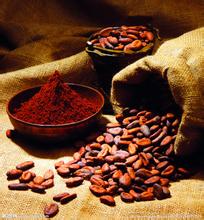Civet Coffee Flavor Taste Variety Production Characteristics Fine Coffee Bean Introduction
The coffee comes from the excrement of an animal called the civet (commonly known as the civet in Indonesia). Although it comes from smelly poop, it is full of sweetness and a burst of indescribable sweetness. This wild musk cat likes to eat fat and pulpy coffee fruits, but the hard hard nuts (raw beans) are indigestible and are excreted with feces. After being cleaned, they become Kopi Luwak coffee raw beans! So many people call it "cat shit" coffee. The Indonesians found that the coffee beans fermented by the civets' intestines and stomach are particularly thick and mellow, so they collect the civets' feces, sift out the coffee beans and brew them to drink. Because the yield is rare and the fermentation process is unique, the flavor is very different from that of ordinary coffee. Traditionally, coffee fruit is transparent.
Musk cat
As the civet coffee gradually came into our sight, the controversy about it also emerged one after another. I don't comment too much on the cruelty of captivity and the proliferation of fake civets. What we can do is to improve our discrimination, choose reliable suppliers or go to quality cafes, and at the same time sincerely. Coffee merchants who sincerely hope that civet farmers will be kind to them and were the first to introduce Kopi Luwak to the United States (M.P. Mountanos) pointed out that when they first heard of this internally fermented coffee, they thought it was an industry joke, but they did not take it seriously. later, they became interested in it when they saw its special report in National Geographic Magazine, and it took seven years to find a stable supply. Began to introduce a small amount into the United States.
After washing or sun treatment, the peel, pulp and sheep skin are removed, and the coffee beans are finally taken out. However, Luwak uses the method of natural fermentation in vivo to take out coffee beans, so it has a special flavor. From these two ways, we can see that there is still a certain difference between artificial cultivation and natural ones. Wild civets must choose the most ripe and sweetest coffee fruits when choosing coffee fruits, which is a kind of natural screening. In addition to eating coffee fruits, it also eats insects and snakes, birds, amphibians and reptiles, so the droppings of real wild civets are mixed with all kinds of substances. And artificial breeding is to keep the musk cat in a cage, it has no chance to eat other kinds of food, hungry only coffee fruit and fruit to eat.
A documentary about the Indonesian civet coffee producing area shows that workers will put defecating pills in bananas for cats to eat, and civets can defecate regularly after eating this kind of fortified bananas. This allows coffee beans to stay in the civet's stomach for a relatively consistent time, that is, to make the fermentation time relatively consistent, which sounds inhumane. However, the flavor stability of the artificially cultivated civet coffee beans is far better than that of the natural coffee fruits that have passed through the civets' digestive system, and only the flesh of the fruit is digested. The hard coffee beans are then excreted intact by the civets' digestive system. This digestion process, so that coffee beans have an unparalleled magical change, the flavor tends to be unique, the taste is particularly mellow, rich and round sweet taste is also unmatched by other coffee beans. This is because the civets' digestive system destroys the protein in the coffee beans, making the coffee much less bitter due to the protein.

Important Notice :
前街咖啡 FrontStreet Coffee has moved to new addredd:
FrontStreet Coffee Address: 315,Donghua East Road,GuangZhou
Tel:020 38364473
- Prev

Introduction to the characteristics of high-quality coffee beans in Tanzania coffee flavor and taste manor producing area
In October 2000, Mkapa was re-elected president of the United Republic, and Karume, a candidate of the Revolutionary Party, was elected president and repeatedly expressed his position of safeguarding national unity, which further dealt a blow to the separatist forces. Since 2001, the coalition government has continued to consolidate the situation of unity, maintain the coalition regime, strive for moderate forces, crack down on the separatist forces in Zanzibar, and allocate budgetary funds and other matters related to Sang.
- Next

Peruvian Coffee Flavor and Taste introduction to boutique coffee beans in manor area
It is called Congress, a unicameral system, made up of 130 members. Members are elected for a term of five years and can be re-elected by the Peruvian Presidential Palace. Congress has two sessions a year, and the standing Committee presides over the work during the recess. Each Congress has a term of five years. The current Congress was established in July 2011. The current President of Congress, Victor Isla Rojas (Victor ISLA Rojas), 201
Related
- Detailed explanation of Jadeite planting Land in Panamanian Jadeite Manor introduction to the grading system of Jadeite competitive bidding, Red bid, Green bid and Rose Summer
- Story of Coffee planting in Brenka region of Costa Rica Stonehenge Manor anaerobic heavy honey treatment of flavor mouth
- What's on the barrel of Blue Mountain Coffee beans?
- Can American coffee also pull flowers? How to use hot American style to pull out a good-looking pattern?
- Can you make a cold extract with coffee beans? What is the right proportion for cold-extracted coffee formula?
- Indonesian PWN Gold Mandrine Coffee Origin Features Flavor How to Chong? Mandolin coffee is American.
- A brief introduction to the flavor characteristics of Brazilian yellow bourbon coffee beans
- What is the effect of different water quality on the flavor of cold-extracted coffee? What kind of water is best for brewing coffee?
- Why do you think of Rose Summer whenever you mention Panamanian coffee?
- Introduction to the characteristics of authentic blue mountain coffee bean producing areas? What is the CIB Coffee Authority in Jamaica?

